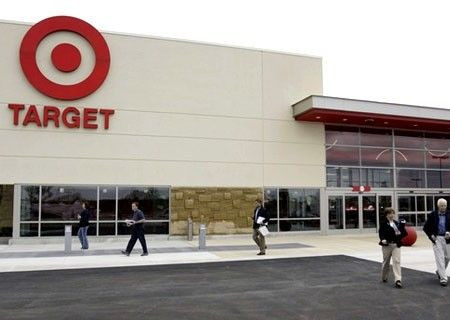A tale of two retail giants on Black Friday

As the stock market focuses its gaze upon the holiday shopping season, two of the most prominent companies in the retail sector that may attract much attention are Wal-Mart Stores Inc. (NYSE: WMT) and Target Corp. (NYSE: TGT).
While these two rivals compete directly with each other (with respect to most product lines), they are two very different types of operations with divergent near-term prospects.
Nonetheless, as if to illustrate the cut-throat and highly competitive nature of the Christmas retail business, both Wal-Mart and Target have been slashing prices on a wide array of products, prompting many other retailers to do likewise.
Michael Sheldon, chief market strategist of RDM Financial in Westport, Conn., expects a “decent” retail shopping season.
“The two biggest headwinds for consumers heading into holiday shopping season are the high unemployment rate and the lackluster growth in wages and salary,” he said.
“However, some of the recent economic data has been somewhat more encouraging.”
Wal-Mart, Target and many other retailers have been cutting prices to entice more shoppers, but perhaps not by as much as in previous years.
“These stores are extremely price-competitive, and this has been going on for several years,” Sheldon said.
“But what’s different this year is that the retailers are managing their inventories better, which means they don’t necessarily have to sell as many products at such steep discounts as they had to do in the last downturn.”
Sheldon cites an interesting phenomenon that has developed recently. High-end and low-end retail stores are doing extremely well, while middlebrow department stores are exhibiting more mixed results.
“Results at upscale retailers like Tiffany & Co. (NYSE: TIF), Polo Ralph Lauren (NYSE: RL), Coach Inc. (NYSE: COH) and Deckers Outdoor Corp. (DECK) have been very encouraging,” he noted.
However, he adds, this is somewhat puzzling given that research surveys indicate that affluent consumers are more risk-averse now than they were last year, despite a higher stock market and a thawing in the credit markets.
At the other end of the income spectrum, low-end retailers like Dollar Tree (NASDAQ: DLTR) and Big Lots (NYSE: BIG), are also flourishing. Sheldon attributes this to the length and depth of the current recession and high unemployment.
“During times of duress many consumers of modest means are likely cutting back on frivolous spending and focusing on cheap, basic items found at these types of stores,” he said.
Presumably, perhaps many cautious middle-class consumers are also going downscale in order to save money and live more frugally.
“It’s the retailers in the middle, particularly big department stores, that are providing a mixed bag of results,” Sheldon noted. “For instance, Macy’s Inc. (NYSE: M) is doing pretty well, while a store like Sears (NASDAQ: SHLD) is struggling to stand out in a very crowded field.”
Wal-Mart and Target both compete for the low- and middle-income customers, and they are widely viewed as the two most important benchmarks for the U.S. retail industry.
However, year-to-date, Target shares have appreciated about 13.8 percent, while Wal-Mart stock has struggled, slipping about 1 percent.
Since the market lows of March 2009, Target shares have skyrocketed 131 percent, while Wal-Mart has risen only 18 percent.
Looking at a longer period, over the past ten years, Target stock has surged about 70 percent, while Wal-Mart has declined about 10 percent.
Why such a discrepancy in performance?
One reason is that Wal-Mart (almost $200-billion market cap) is about four times as large as Target, making growth an arduous climb.
“Like so many other large-cap stocks, Wal-Mart has simply become too big and unwieldy to generate any significant growth anymore,” Sheldon explained. “The stock has basically gone nowhere in ten years, much like Microsoft (NASDAQ: MSFT) and Pfizer (NYSE: PFE).
These companies enjoyed huge growth in the 1990s, but once growth slowed in the new century,investors disdained paying a premium for them anymore.”
Target is obviously more favored by investors – but as a smaller, more nimble company, it can still deliver the kind of rapid growth that the market likes.
However, if one looks at the stock market during the brutal downturn from October 2007 to March 2009, an interesting picture emerges. During that period of historic market volatility and fear, Wal-Mart shares gained about 3.2 percent, while Target plunged almost 60 percent (roughly matching the huge drop in the broader market).
Sheldon believes that during such a time of volatility and duress, investors gravitated to what they viewed as safe, defensive stocks, like Exxon (NYSE: XOM)) and Wal-Mart.
But, of course that infatuation didn’t last long. Since the market bottom of March 2009, Target has rebounded superbly, while its rival Wal-Mart has struggled.
For now, Sheldon believes Target will continue to outperform.
“It just had a very decent quarter, with some positive comps,” he said.
Indeed, same-store sales at Target are forecast to rise about 2 percent to 4 percent for the fourth quarter, the best such performance in three years.
By contrast, same-store sales at Wal-Mart have been weak the past few quarters -- for the fourth quarter, such sales are expected to range from a decline of 1 percent to a rise of 2 percent.
In addition, Wal-Mart’s struggles would be even more pronounced if they didn’t have overseas operations. In the third quarter of 2010, sales at Wal-Mart’s U.S stores shrank by 1.3 percent, but international sales (which comprise stores in Japan, UK, Canada, Mexico and China) surged by 9.3 percent.
© Copyright IBTimes 2024. All rights reserved.





















